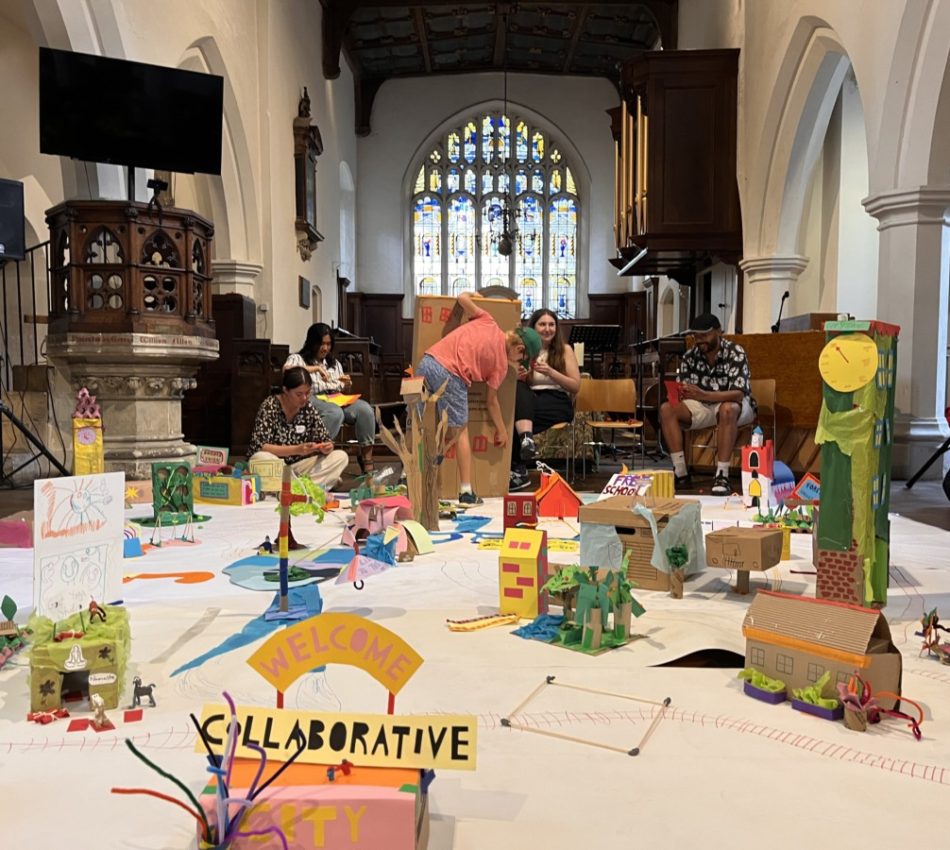Written by:
On Saturday 24th June, The Glass-House held an event in collaboration with Bow Church as part of this year’s London Festival of Architecture. We invited families with children and the general public to participate and find out how to co-design and build cities together as part of our event, ‘Co-Creating a Collaborative City’. Taking place in the historical Bow Church, a landmark for the communities of Bow ever since its establishment in 1311, the event was held in 3 sessions: morning, mid, and late afternoon running for 90 minutes each.

About the Co-Design Sessions
We invited participants to imagine what a city designed collaboratively will look like, hence the name ‘Co-Creating a Collaborative City’. Our participants were encouraged to think about what they feel is important in cities, what they want to see more of in the city and what might be missing currently. Prompted by the placement of blank papers on the floor of Bow Church as the cityscape canvas, everyone was invited to creatively co-design their own buildings and city infrastructure using recycled materials and craft supplies. They freely choose what qualities they wanted to portray in the models and the fabric of the city itself. Using cardboard, coloured papers, markers, tissue papers, fuzzy sticks and egg cartons, participants used play to freely express themselves when making the collaborative city.
Using Play for Collaboration in Co-Design Processes
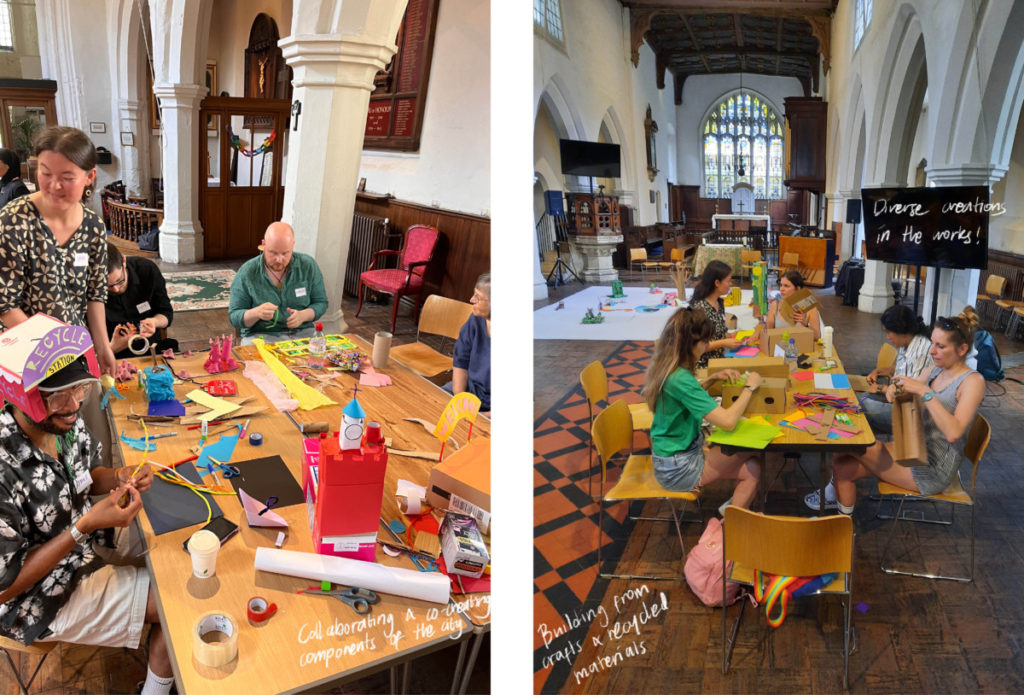
We started each session with a brief explanation, inviting the participants to contribute to the city by making something. We asked them to see what exists in the current cityscape and reflect what is missing. What kind of building, facility or infrastructure do the citizens need? What is needed in the city to make it ideal? They reflected on the questions and started making models out of the supplied tools and materials.
What was interesting was the dynamic between individuals during the sessions. The group of people in the first session mostly stood around the crafts table. When asked, one of the participants said that it’s for more convenient and quicker access to the materials. Most of them went straight into the making process, conversing and getting to know each other in between. Some also collaborated to make a building together because they both felt it should be added to the city.

In the afternoon session, all of the participants took supplies from the crafts table to make models on the tables whilst sitting on chairs. In this session, most of the participants asked each other what they’re making and why they thought it was important to have it in the city. There were a lot of playful creations and the city was developing rapidly!
During the last late-afternoon session, a lot of children came by with their parents and grandparents, and were ecstatic to join the action. Some of them looked at the existing city and tried to figure out what they wanted to make. We asked them some questions, exploring what they want to see and experience in the places they live and play. One of the young people made an art installation and a hotel (they were very proud that the hotel was the tallest building in the city). Others made a cake stand, a hospital, and a clock tower.
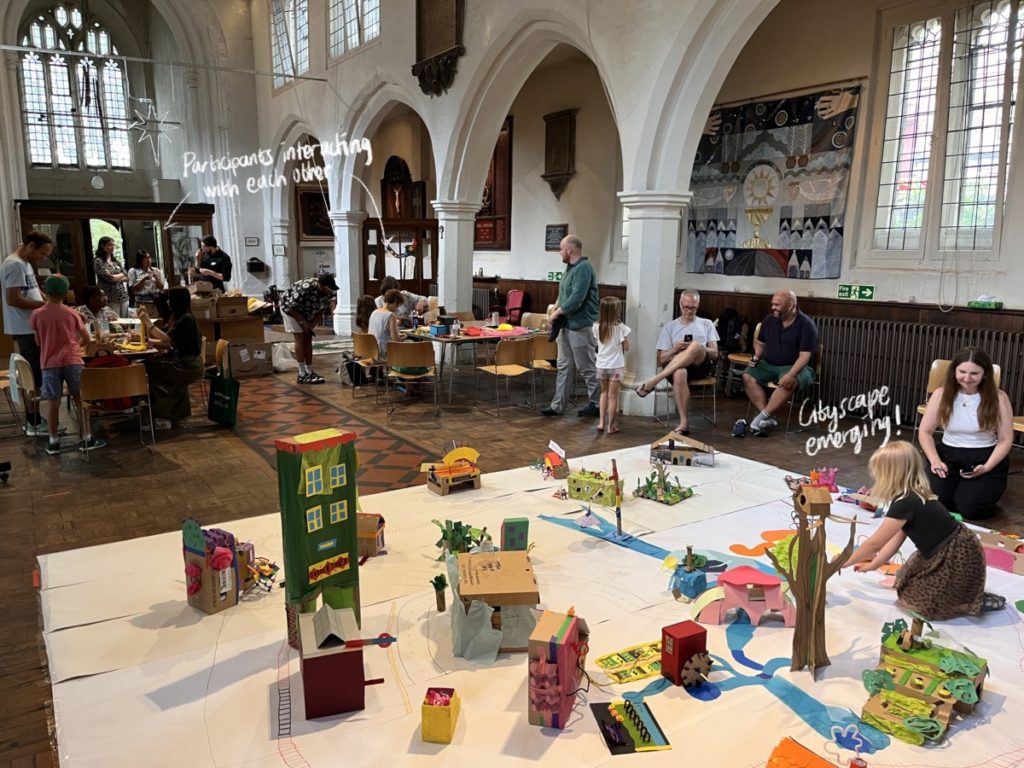
During the first two sessions, most of the participants were adults, and tended to be very gentle with their creations; taking off their shoes and placing their model on the cityscape. This is a contrast to some of the young people, who immersed themselves in the city by running around the city’s streets, exploring the buildings by crawling and walking through the city fabric.
Using Personal Experiences to Create
One of the key components of the co-design sessions was the active contribution and collaboration of participants in making the city. Everyone was welcome to explore possibilities and create anything they thought is a good fit for the citizens. Participants were encouraged to reflect on personal experiences and get in touch with their creative flair and imagination while making the models.
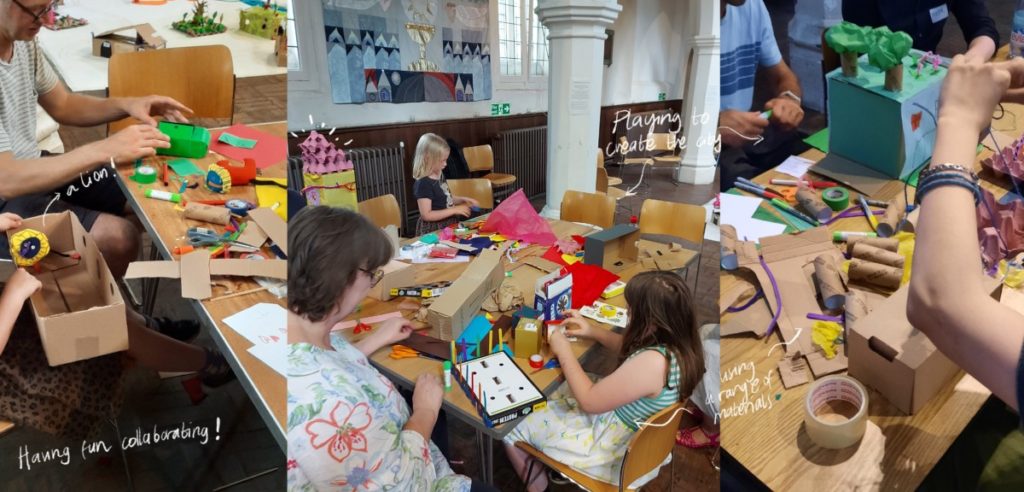
The Glass-House had discussions with the participants on what they want to put in the city, what qualities should be reflected on their creation, and where to place it. We asked them to consider the size and height, how much light and air the buildings should have, signage and entryways to it, and the materials of the buildings. It helps them identify what the building needs and what is missing from it to make it habitable for the citizens. Participants added windows, doors, greenery, hatching, sketches, textures, and signs to further develop their designs.
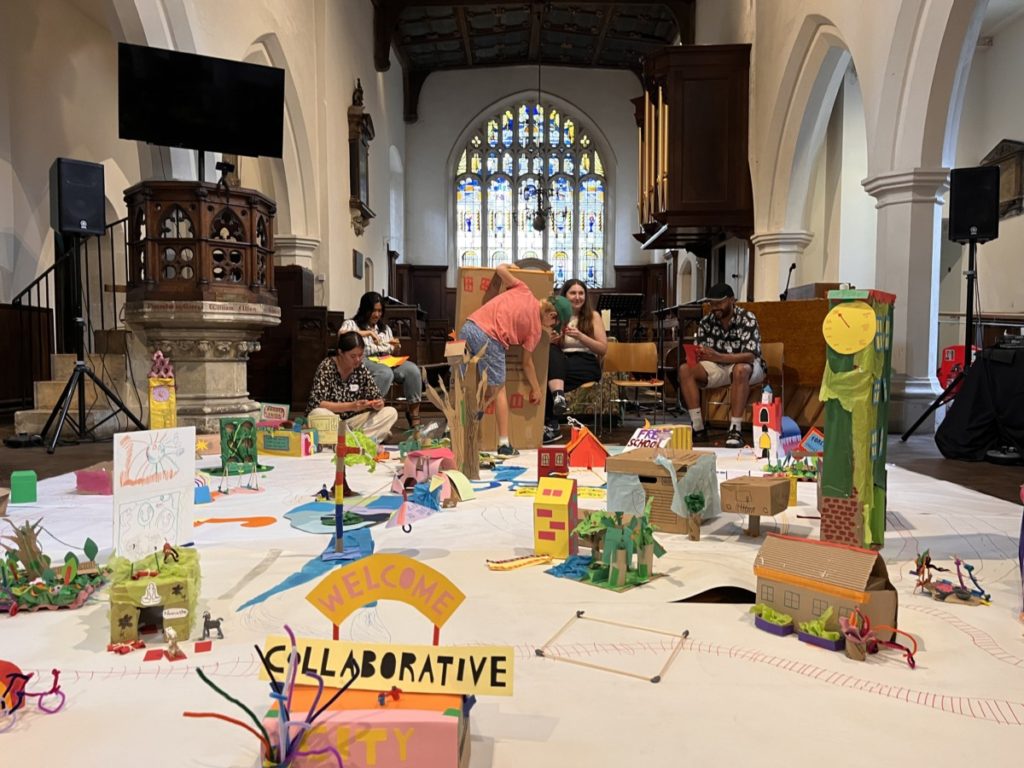
They had a lot of fun decorating the buildings, figuring out building materials and how to represent it in the model. Brick walls were drawn with markers, windows were cut out from origami paper, recycled cardboards were cut to become walls, tissue papers crumpled to imitate leaves and grass, fuzzy sticks bent to make benches, egg cartons taped for an amusement park attraction. Creativity was in the air!
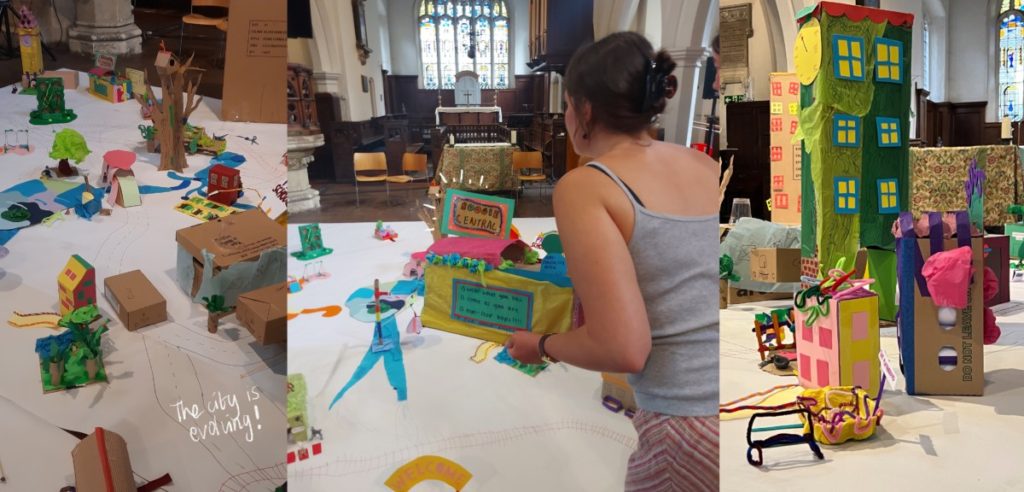
Participants also needed to consider the placement of their models according to what was already in the city, how the different buildings related to each other and how the placement could benefit the citizens whilst not obstructing or clashing with other participants’ creations. For example, the urban farm was put next to a residential complex and near a water source, which was the river. The participant wanted the citizens to have convenient access to the farm for day-to-day produce and also be close enough to the water system for the farm’s irrigation. There were lots of interplays between different participant’s creations, resulting in small infrastructures. One such example was the water mill, placed on the river to generate electricity that then powered the free school nearby.
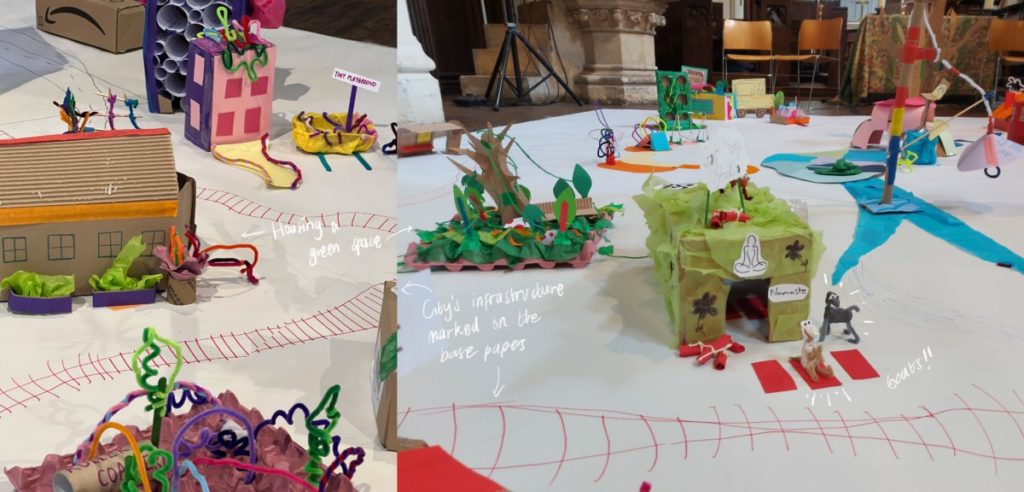
We asked participants to consider how citizens will go from one place to another, how the buildings relate to each other, what kind of infrastructure they need, and where it should be located. As each participant placed their building, they also added roads, railways, bus stops, trains, stations, riverways, and trees to the cityscape. Squares and quarters started to emerge, such as the green hub where the forest, recycling centre, and urban farm is located. Or the cultural quarter with goat yoga centre, playgrounds, and cake shop. A bug hotel and set of playful townhouses made up the living areas open to humans and non-humans. Little squares popped up, some made by families and friends who had come together, and streets were drawn to connect buildings with each other.
An Afternoon of Co-design Fun
One of the participants thought that the activity was relaxed and felt therapeutic because they haven’t done model-making in a while and in such a playful setting. Another said that it was a new thing for them but it was a lot of fun. The event fostered a collaborative experience and sparked conversation amongst the participants. Overall, the event encouraged a learning experience while still employing play at the core, making it accessible and enjoyable. The cityscape looked alive and was full of amazing creations at the end, representing the diversity of ideas which can emerge from collaboration.
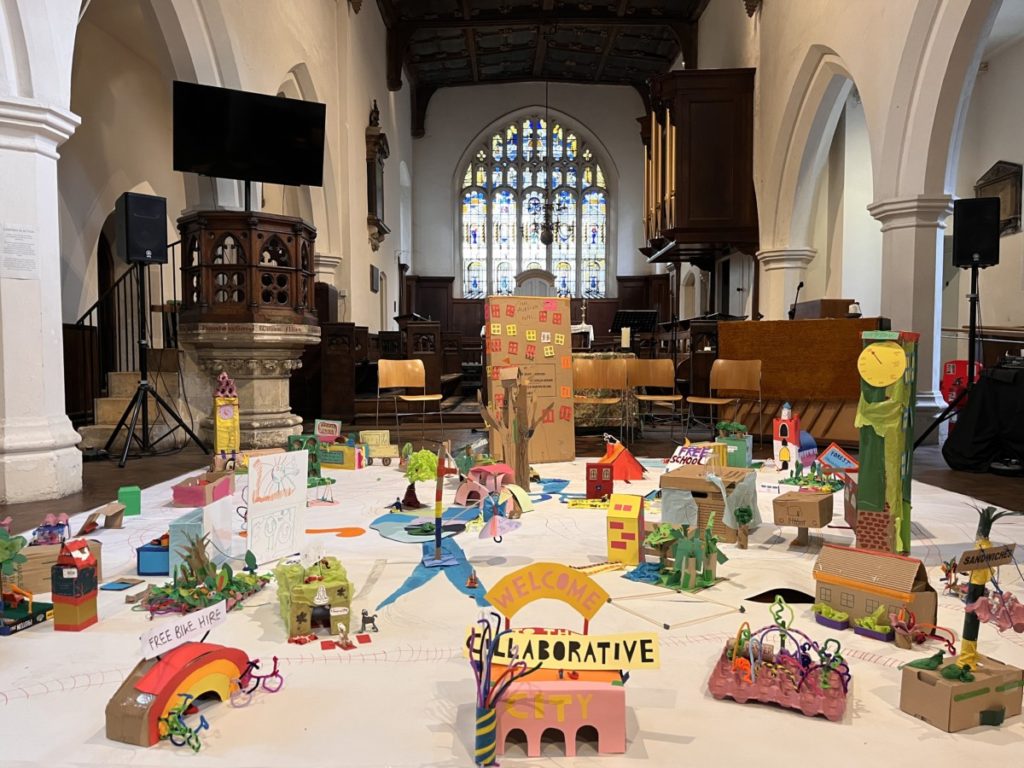
Our summer intern, Alsa, has written this blog as part of her placement from Central Saint Martin’s Narrative Environments Course.
